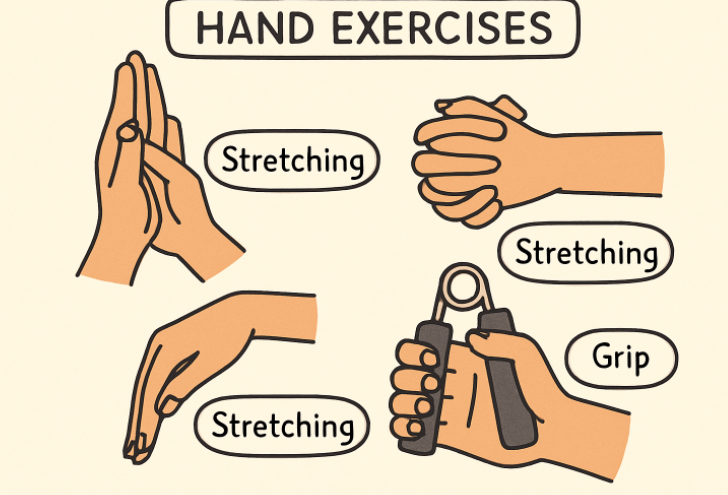Our hands and upper extremities are vital for nearly every activity, from typing and cooking to lifting and playing sports. Yet, they are often overlooked until pain or injury strikes. Proactively caring for these essential body parts can help prevent injuries and ensure long-term dexterity. One of the smartest first steps is seeking guidance or treatment from a qualified orthopedic wrist doctor should you encounter pain or persistent discomfort, but there’s much you can do each day to maintain hand and wrist health.
Simple modifications to your lifestyle, ergonomics, and routines make a remarkable difference in injury prevention. By prioritizing hand and upper extremity health, you protect your ability to perform everyday tasks safely and comfortably. Integrating stretching, proper posture, and safe techniques doesn’t take much time but brings long-lasting benefits.
People who work with computers, tools, or repetitive motions are particularly at risk for overuse injuries. The more you rely on your hands, the more crucial it becomes to implement regular maintenance and early intervention. Preventive habits aren’t tough to learn, and they’re easy to incorporate into your day if you know what steps to take.
Understanding warning signs and learning clever prevention techniques can safeguard your mobility for years. The following strategies will help you feel confident about protecting your hands and upper extremities at work, at home, or during any activity.
Regular Stretching and Strengthening Exercises
Stiffness and lack of strength can make hands more susceptible to sprains, strains, and repetitive-use injuries. Incorporating simple stretching routines—like wrist bends and gentle finger pulls—keeps joints lubricated and muscles flexible. Equally important are strengthening moves; hand therapy balls, rubber bands, or grip trainers make quick work of building strength in your fingers, palms, and wrists.
Maintaining Proper Ergonomics
Your workspace layout and daily mechanics play a huge role in injury prevention. Ensure keyboards and mice are positioned so your wrists remain flat and neutral. Place your mouse close to your body, and use chairs that support good posture. Ergonomically designed mouse pads and wrist supports can alleviate pressure during extended computer use. According to Mayo Clinic’s guide to office ergonomics, optimizing your setup properly reduces the risk of conditions like carpal tunnel syndrome and tendonitis.
Using Protective Gear
Many injuries occur during DIY projects, sports, gardening, or mechanical tasks—times when external risks are highest. Gloves are an easy but effective line of defense, offering protection against sharp objects, chemical exposure, and repeated impact. Selecting gloves suited to each task ensures comfort and safety; padded gloves are better for cycling or construction, while nitrile gloves are perfect for painting or handling harsh chemicals.
Taking Breaks During Repetitive Tasks
Continuous, repetitive motions can silently strain tendons and nerves. Whether you’re typing, knitting, or assembling components, the risk of overuse injuries rises without scheduled breaks. Stand, stretch, and flex your hands and wrists at least once an hour. Microbreaks—short, frequent pauses—encourage circulation and relieve tension before it builds into injury. Setting reminders on digital devices can help ensure you don’t skip these restorative moments.
Practicing Safe Techniques in Daily Activities
Many hand injuries can be traced to small, preventable mistakes in daily life. Use proper tools—like bagel slicers instead of knives—for safe food prep. Lift or carry objects with both hands, keeping heavy loads close to the body. When opening jars, avoid twisting motions that strain your wrists; use a jar opener or tap the lid gently on the counter first to loosen the seal. Strategic technique changes help prevent strains, sprains, and accidental cuts.
Staying Hydrated and Nourished
Muscles, joints, and connective tissues depend on good hydration and nutrition for strength and recovery. Dehydration amplifies fatigue and muscle soreness, while a lack of essential vitamins and minerals can affect tissue repair and resilience. Integrate calcium-rich foods, lean proteins, leafy greens, and healthy fats into your diet for comprehensive joint support. For in-depth guidance, see Healthline’s nutrition tips for joint health.
Recognizing Early Warning Signs
Listen to your body: persistent aches, swelling, tingling, or numbness are signs not to ignore. Early intervention can prevent temporary issues from turning chronic. Symptoms that linger, interrupt sleep, or are accompanied by weakness often indicate the need for professional evaluation. Quick action and rest at the first signs of discomfort can accelerate healing and forestall more serious problems.
Consulting Professionals When Needed
Should discomfort persist or worsen despite preventive measures, professional help is critical. Orthopedic specialists and occupational therapists can diagnose underlying problems, recommend tailored rehabilitation, and guide you safely back to health. Delaying care can lead to more complex or permanent injury. Don’t hesitate to contact healthcare providers for expert evaluation and personalized solutions.
Caring for your hands and upper extremities ensures you can keep up with life’s demands today and well into the future. With daily maintenance, smart breaks, and prompt attention to warning symptoms, you’ll enjoy strong, pain-free hands ready for any task.







